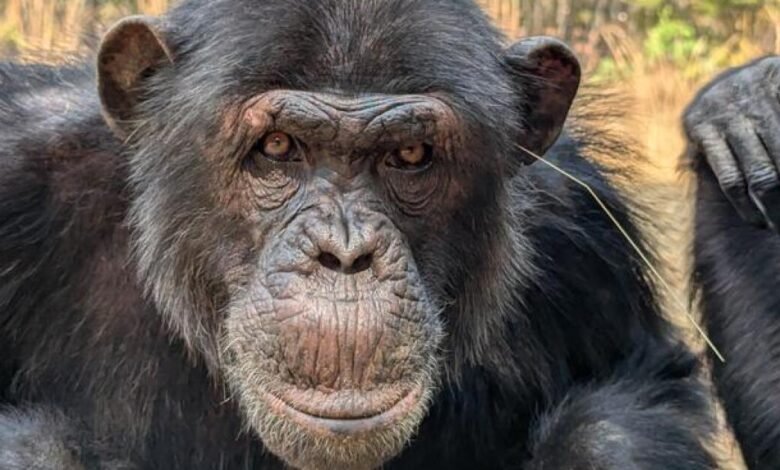Chimps mimic human trends with quirky grass fashion

People like to dodges. For instance, inclined eyebrows, pet scarves, or tiktok transfer with out sensible use. Most of us don’t invent these items. We see them, copy them. Voilà: Instant path.
We’re not alone. Copy of animals one another, however normally to outlive. Chimpanzees share meals methods. Birds mimic songs. However generally, they’re simply … they go rogue.
Take Orcas monitored in 1987 Wears dead salmon Like fish hats. There is no such thing as a use of searching, no wholesome characteristic, only a splash of underwater drama.
Nonetheless, though it seems to be the extent of the “unjust” behaviors, scientists haven’t spent a lot time looking for the explanation for capturing animals that don’t serve any clear objective.
As soon as once more in 2010, the daring chimpanzees started in a sanctuary in Zambia a curious development: she hung a blade of grass in her ear … and left her there. No cause. No itch. Simply a chic forest.
Seven others quickly joined, and why not? Even after the unique “Grassfluense” demise, the unusual behavior lived, with a couple of chimpanzees that also shake the looks as we speak.
Flash-Ahead, a workforce of researchers from Utrecht College, Durham College, and different establishments of the chimpanzee group in the identical haven that has turn out to be extra inventive. Not solely did we put on grass of their ears, however they allowed it to intervene behind them as properly. Trend assertion? Inside joke? No one is aware of. What’s noticeable is that different chimpanf teams haven’t been constructed on the campus type, though they share the identical setting.
So Edwin Van Leyne and his colleagues defined that though it could appear ineffective, these paper equipment point out that chimpanzees have a sort of their very own tradition and maybe their very own thought of what’s great.
The analysis workforce, led by Van Leyne, adopted the accuracy that the chimpanzee adopted this behavior over time and observed one thing key, which she didn’t invent from scratch. Conduct is more likely to unfold via social copies, not a coincidence.
However when the workforce enlarged what ignited this development, they discovered one thing actually fascinating …
“Each teams, the place chimpanzees put codes of grass of their ears, they’d the identical standing.” “These careers reported that they often put a blade of grass or porridge of their ears to wash. The eating places in different teams mentioned they didn’t do it. The chimpanzee within the group after which found that they grabbed the grass blade elsewhere as properly.”
Within the wild, chimpanzees are alive. They don’t have any time for twisted hobbies similar to carrying grass of their ears. However in captivity? Life is a bit simpler. With much less meals searching and operating out of hazard, chimpanzees get extra free time … and it seems to be extra inventive.
The chimpanzees researchers who copy the unusual habits of one another, such because the design of the ear or rear equipment. There is no such thing as a clear objective, however habits is spreading, identical to human traits.
People are great in copying, even unusual issues, and a few scientists imagine that that is the key sauce behind our cultural growth. Most animals aren’t involved with apparently imitating the behavioral behaviors, in order that they proceed to re -invent the wheel.
However this research reveals that chimpanzees can also be in a social custom for this.
However what if these costumes weren’t in useless? Whereas Van Leivewen and his workforce initially noticed the path of grass in sacrificing it as only a unusual habits with out a clear job, they’re now making ready a extra possible risk: social interconnection.
An individual normally copying, like your ear grass out of your ear, could also be chimpanzee technique to say, “I see you, I such as you, and I need in.”
Simply as people mimic the traits which might be acceptable for them, chimpanzees might use these lush equipment as small communication works, friendship and belonging to their teams.
The research was printed within the journal behavior.
supply: Utrecht University
2025-07-19 09:03:00





